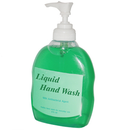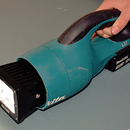Introduction: Simple POV Wheel Lights
This Instructable will show you how to make POV lights for bike wheels that generate random colors and patterns and doesn't require any electronic circuit boards or special skills. When I first saw a monkey light I thought that is cool can I make one? Then I saw the electronics and thought probably not. After a bit more thinking maybe I don't need the electronics just to make random patterns. So I built it, not knowing what i would get in the end but it works pretty good. You don't need much to make them and should only take a couple of hours. Other road user certainly notice you at night and children point and say "look mummy his bikes on fire"
Step 1: Getting Started
Parts List
- 3 LED ribbons (red blue green)
- 3 flashing LEDs
- 2 Nine volt batterys
- 2 Battery snaps
- Cable ties
- Clear plastic or acrylic
- Switch
- Soldering iron
- Hot glue
- Insulation tape
- Wire cutter/ stripper
Step 2: Making the Strips
First thing to do is to make three strips for the LED strips to stick to. I first made a paper template to get the right shape and get an idea of how to attach the strips to the spokes. I decided to use 2mm clear acrylic plastic and simply cable tie it to the spokes. Once the paper template was correct (it took a few tries to get it right) I then cut out 3 triangle shaped strips and drilled hole for the cable ties. You will need to take care when drilling the holes as acrylic tends to grab the drill and split so use light pressure and put the plastic on a block of wood.
Step 3: Wiring It Up
- The red wire from the ribbon need to go to the short lead of the flashing LED and all three ribbons need to be wire like this.
- Next all the flashing LEDs long leads can be wired together with a red wire and all the black leads from the ribbons can be joined together
- The 2 battery snaps can be wire together in series and the then the red and black wires soldered together.
- Once all three ribbons are wired together the red and black wires can be joined to the battery pack and some insulation tape can be used to tidy up the wiring.
- Fit the batteries and you should have a flashing light show.
- A switch can also be fitted if you wish
Step 4: Attaching the Lights to the Wheel
Once everything is working, It just a case of using cable ties to attach the the plastic strips at regular spaces around the wheel, and cable tie the two 9 volt batteries to the center hub. I could could probably come up with a better way to attach the batteries, but the cable ties seem to work quite well. Its also worth the effort to put a switch in the circuit at the battery snaps are difficult to remove one the batteries are fitted to the wheel.
Ive also tried to take a video of the wheel in action but haven't had much success, Its a bit like filming a spinning propeller I keep getting some strange looking results that don't look like anything that you can see with the naked eye, and dont do the project justice. The finished lights It looks a lot like the photos anyway.
Its very hard to even take photographs of the bike in motion with low light so Ive include a few failed attempts before I just gave up and "faked it" Pretend to ride the bike and Ill spin the wheel photos

Participated in the
Make It Glow Contest

Participated in the
I Could Make That Contest













